In this section, we will report on the activities of the students and the classes of the Toji × Kyoto City University of the Arts “Introduction to Conservation Science “Making a Toji Picture Scroll” (in charge: Professor Shigeo Uno).
Production of Toji Picture Scrolls
On Wednesday, July 22nd, we finally started the production of the picture scroll.
In the past, classes were held at Campus Plaza Kyoto and Toji Temple, but this time they were held at Kyoto City University of Arts, where the atelier is located. In the class, Professor Uno first gave a lecture on the types of brushes used in Japan painting, how to draw with each brush, and how to use ink and paint, and then we actually started making picture scrolls.
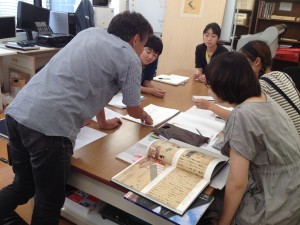
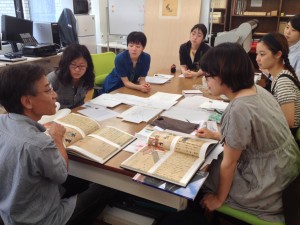
As a result of repeated research and interviews at Toji Temple, it was decided to draw a picture scroll with three themes: “Lotus Gate”, “Three Pine Trees”, and “Five-storied Pagoda”.
Students will be divided into three teams and will be assigned to each theme. The team consists of students from Kyoto City University of Arts and students from other universities who are transferring credits, and students who are transferring credits work together to complete the painting of the part they are in charge of.
“Lotus Gate” depicts a legend that is said to have occurred when Kobo Daishi Kukai passed through the gate to travel from Toji Temple to Mt. Koya.
“The Pine of the Three Bells” depicts the legend that when Kobo Daishi Kukai went to the Tang Dynasty to train, he threw the three bells (Buddhist utensils used in esoteric Buddhist rituals) toward the sea on the sandy beach in the Tang Dynasty in the hope of the prosperity of esoteric Buddhism, crossed the sea through the clouds, and hung on the pine tree of Toji Temple given to him by the Emperor after returning to Japan.
“Five-storied Pagoda” depicts the burning and reconstruction of the five-storied pagoda, which has been repeatedly burned down and rebuilt in its long history of 1,200 years.
While some of the students were creating Japan paintings for the first time, the team exchanged opinions, checked the Mr./Ms.drawings, and asked for advice from Professor Uno.
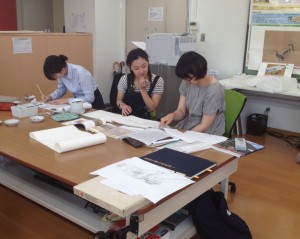
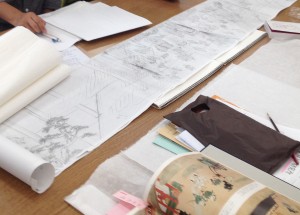
During the summer vacation, the students will work on their respective parts on their own, complete the preliminary drawings by early September, and have a meeting with the people involved in Toji Temple about the contents.
Second interview with Toji
On Wednesday, June 10, I took on the challenge of conducting a second interview at Toji Temple. This is my first visit to Toji Temple in a month since my last interview on Wednesday, May 13.
This project is approaching the second half of its life, and the subjects to be drawn in the picture scroll, such as the Lotus Gate, the five-storied pagoda, and the sky and sea people, have been solidified. This time, in order to gather the information necessary to create a story for a picture scroll and to actually draw it in a picture (historical facts, episodes, etc.), we interviewed Mr. Niimi, the head of the Toji Temple and Cultural Properties Protection Division, who is familiar with materials and documents related to Toji. In the interviews, the students were actively asking questions, perhaps due to the results of their training and previous experiences, as well as their preparations. In addition to the main subject, there were also questions unique to art university students, such as confirming the details depicted in the picture scrolls, such as the cityscape, scenery, and seasonal sense of the area around Toji Temple at the time when each episode occurred.
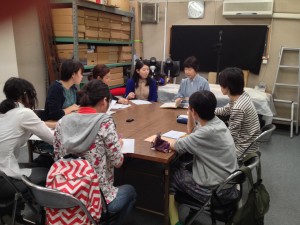
In addition, although the information that the students had researched in advance was a mixture of historical facts and legends, he advised that it is important to understand historical facts and non-historical facts, organize the information, and then formulate the story of the picture scroll.
Interview Training ~ Interview Challenge at Toji Temple
Interview Training
On Saturday, May 9, we invited former NHK announcer Yoshihiro Mori as a lecturer and conducted interview training jointly with Professor Wakamatsu’s class at Kyoto Sangyo University, which is conducting classes at Kamigamo Shrine. Interviews with people involved in World Heritage sites and local people are very important in order to deepen our understanding of the World Heritage sites that take place in the process, and in the process of discovering problems and establishing hypotheses for solutions. Uno-sensei’s class is scheduled to have an interview at Toji Temple next week on Wednesday, May 13.
According to Mr. Mori, of the many jobs of an announcer, interviews are one of the most difficult. In the limited time of 90 minutes, he explained in an easy-to-understand manner with his own experience about how to prepare for an interview, the necessary preparations, and interview techniques that even beginners can use.
The students listened attentively to Mr. Mori’s enthusiastic lecture and took notes.
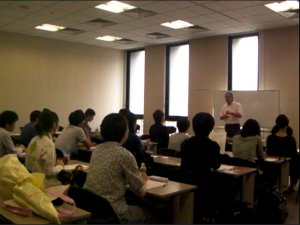
After the interview training, a strategy meeting was held based on the content of the training in preparation for the next class. We discussed how to prepare for the interview and how to divide the roles on the day of the interview.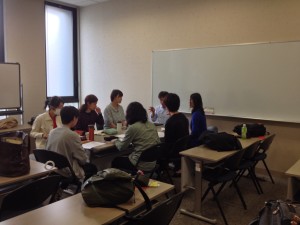
Interview at Toji Temple
On Wednesday, May 13, we visited Toji Temple to get some hints on the subject matter to be drawn in the picture scroll, and interviewed General Manager Sunahara. Toji Temple has a history of 1,200 years, and there are many important cultural properties, national treasures, and episodes of great people related to Toji such as Kobo Daishi. In this interview, the students researched Toji Temple in advance and interviewed Director Sunahara about what they were interested in and what they were interested in to deepen their knowledge. The students conducted interviews on a wide range of topics, including the origin of the name of the gate at Toji Temple, their roots, Buddha statues, the life of Kobo Daishi, and events that still exist today, such as Kobo City.
The student who conducted the interview said, “I was able to hear what I wanted to ask to some extent, but I received more information than I expected, and it is difficult to summarize it. I was talking.
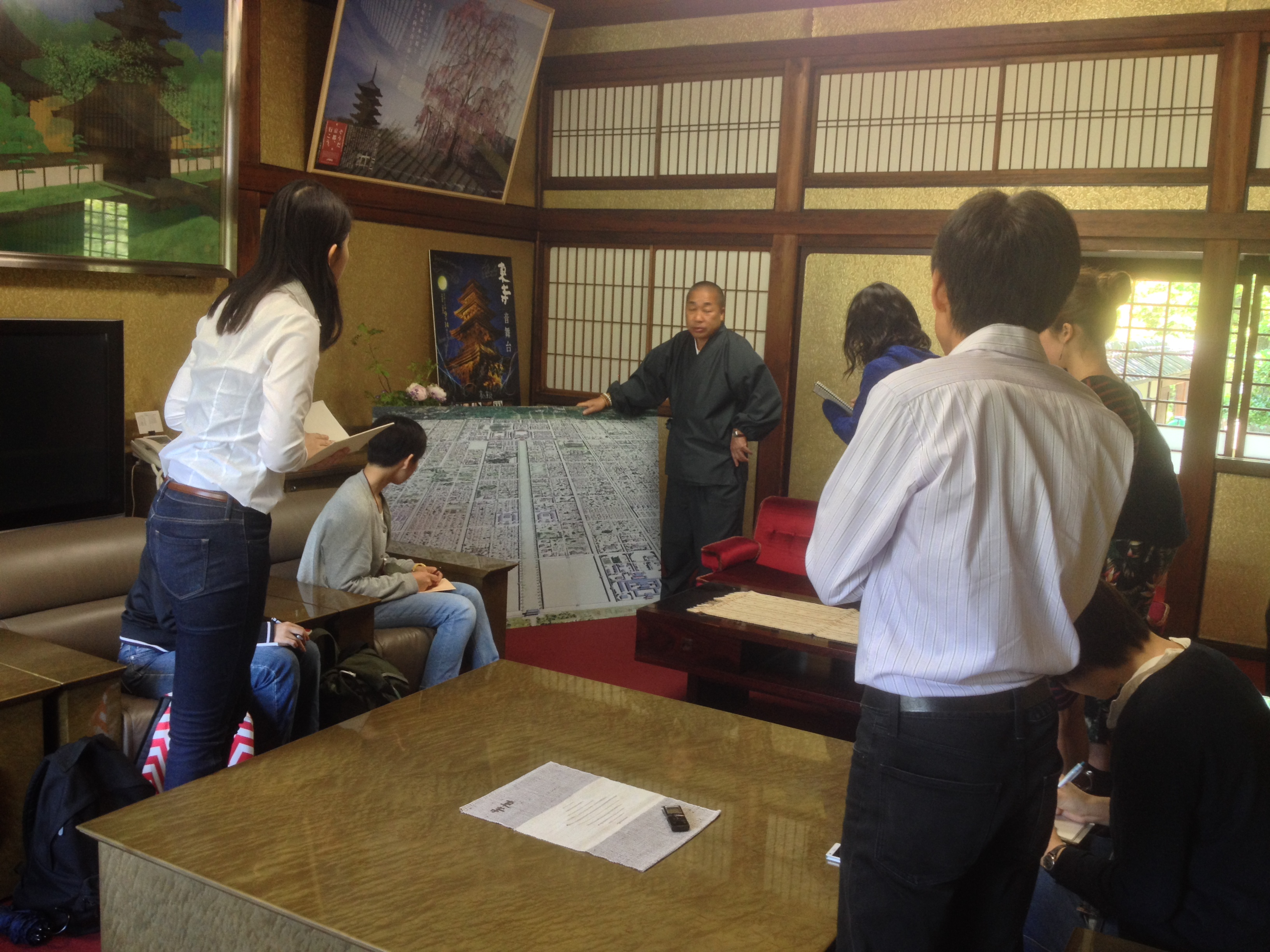
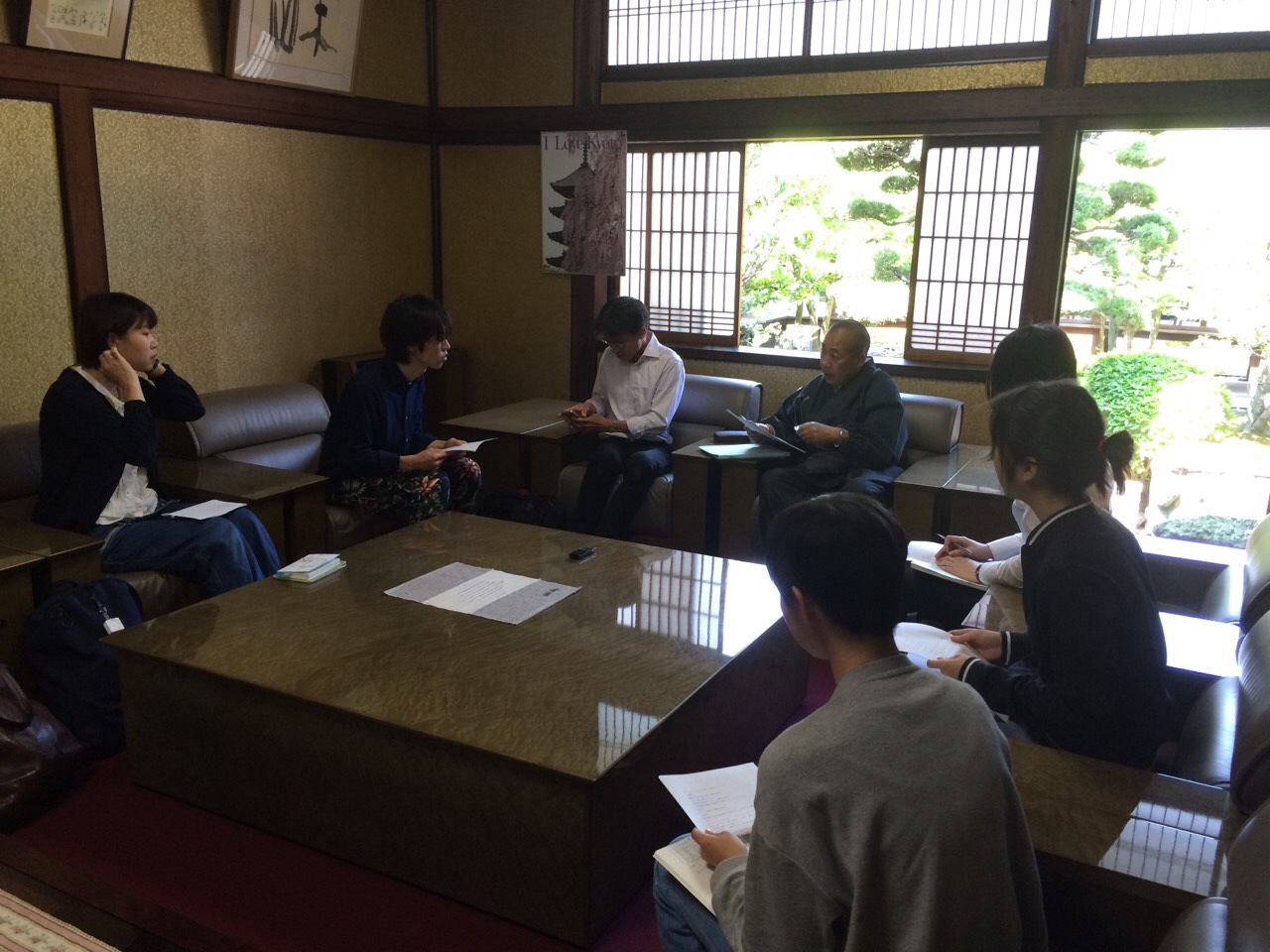
After the interview, we visited places that we could not visit during our previous visit to Toji Temple, under the guidance of Director Sunahara.
1st class ~ First visit to Toji Temple
This class started on Wednesday, April 15, ahead of other World Heritage PBL courses. The theme of this course is “to create original records that can be passed on to future generations using traditional expressions of Japan painting.” In line with the theme, Professor Uno, who was in charge of the exhibition, explained the characteristics of traditional Japan painting, including picture scrolls.
While current recording media have disadvantages such as deterioration due to color fading in the case of photographs and the inability to play records due to technological advances in the case of digital devices, picture scrolls created with traditional techniques have survived vividly after hundreds of years due to the excellent properties of the materials. He explained that he was able to convey the events of the time effectively and in an easy-to-understand manner.
In the second half of the class, the students created illustrations and introduced themselves and gave presentations on their enthusiasm for the class, which is unique to an art university.
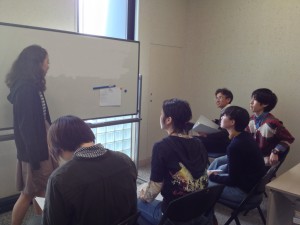
On Wednesday, April 22, we actually visited Toji Temple and toured the temple grounds under the guidance of Mr. Sunahara, General Manager of Toji Temple. The lecture was very intense, as he carefully explained the valuable cultural properties of Toji Temple, which has a history of 1,200 years, and the willows and anecdotes related to the Ono Michi style, a Heian period calligrapher who is also known as the Sankan, and their anecdotes.
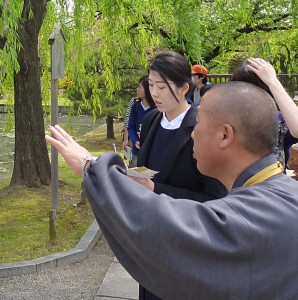
Inquiries
University Consortium Kyoto Credit Transfer Project
TEL 075-353-9120 FAX 075-353-9121
〒600-8216 Shimogyo-ku, Kyoto-shi, Nishitoin-dori, Shiokoji, Shimo-ku, Kyoto, Campus Plaza Kyoto
* Reception hours: Tuesday ~ Saturday 9:00 ~ 17:00 (excluding year-end and New Year holidays)
















